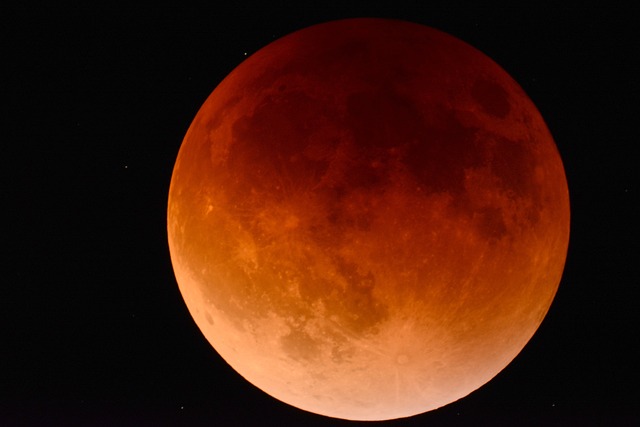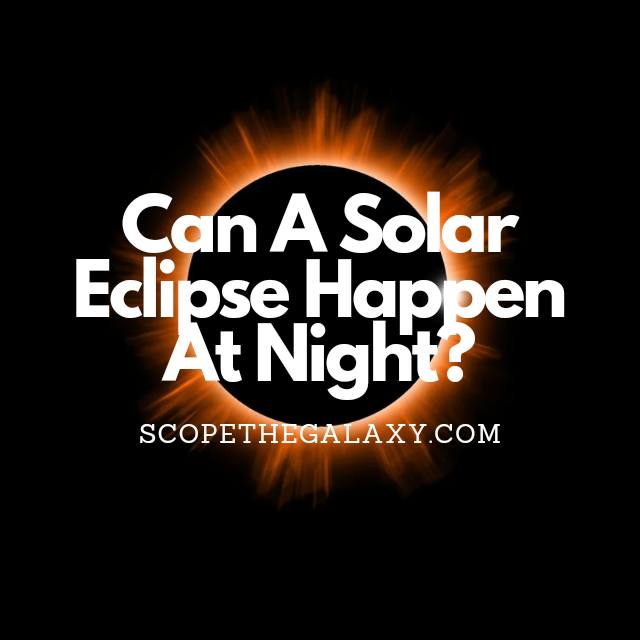*This post may contain affiliate links. This means we may make a commission if you purchase an item using one of our links*
Table of Contents
Still, lunar eclipses also involves blocking the light from the Sun, so it is sometimes referred to as a nighttime solar eclipse. These events are relatively common and occur around two to five times yearly. Continue reading to find out more about these phenomena.
What Causes A Night Eclipse?
A “night eclipse” occurs when the moon passes through Earth’s shadow. The Earth casts a shadow on the moon because it blocks out the Sun and casts a dark shadow. There are two types of lunar eclipses: total, which is when the Earth completely covers the moon, and partial, which is when the Earth casts a shadow over only a portion of the moon.
The Earth casts two shadows during a night eclipse: one from the penumbra and one from the umbra. The penumbra causes a subtle darkening of the moon’s surface, while the umbra causes a dramatic darkening of its surface due to blocking all direct sunlight.
Though we call this phenomenon a lunar eclipse, we can also classify it as a solar night eclipse. The reason is that the moon doesn’t generate its own light; the light we’re blocking is light reflecting from the Sun – hence “solar eclipse.”
How Often Does A Solar Eclipse Happen At Night?

We generally call eclipses that happen during the day, solar eclipses, and eclipses that occur during the night, lunar eclipses. Even though both types of eclipse block out the light from the Sun, these terms help us to differentiate between the two.
A solar eclipse happens when the moon passes between the Sun and the Earth, casting a shadow onto our planet during the daytime. In contrast, a lunar eclipse occurs when the Earth blocks the Sun’s light from reflecting off the moon, which causes the moon to “go dark.”
Both of these types of eclipse happen at a similar frequency (around twice a year), but most people believe solar eclipses happen at a lower frequency than lunar – or night – eclipses. The reason for this is that a lunar eclipse is viewable to many people.
Think about the size of the Sun compared to the moon; the star at the center of our galaxy is 400 times bigger than our moon. The only reason we even experience a solar eclipse is because of the moon’s proximity to Earth (coincidentally around 400 times closer).
While this proximity allows the moon to block the Sun’s light temporarily, it only covers a small amount of Earth. Only 0.01% of Earth’s surface experiences a solar eclipse at a given time, whereas 50% of Earth can witness a single lunar eclipse.
Both types of eclipse happen on a similar frequency, but if you stay in one location on Earth, you have a far greater chance of seeing a night eclipse than you have of seeing a solar eclipse.
Is A Solar Eclipse At Night Rare?
Lunar eclipses are perhaps the most common type of eclipse you will see. Not only do they occur at a reasonable frequency but they also cover a much more significant percentage of the Earth.
The rarest type of eclipse is the hybrid solar eclipse which occurs when a solar eclipse transitions from annular to total or vice versa. This rare event happens when the moon’s shadow moves across Earth and alters the appearance of the solar eclipse. And it only happens around once a decade.
The moon’s shadow occurs in three different areas: an umbra, an antumbra, and a penumbra, and these shadows create different types of eclipses.
A total solar eclipse occurs when the dark central portion of the shadow, known as the umbra, appears slightly larger than the Sun and entirely blocks its light. The antumbra is a half-shadow located at the end of the umbra. This area of shadow creates an annular eclipse where a disc of the Sun’s light remains around the moon.
In contrast, the penumbra (or lighter part of the shadow) only casts a partial eclipse, where only a fraction of the Sun’s disc is obscured by the moon’s shadow.
A hybrid eclipse combines all three parts of the moon’s shadow, creating all three types of an eclipse. This means the phenomena is experienced differently by people located at different points of the eclipse path.
The reason for this change in appearance is Earth’s curvature. As the Earth and moon are in constant motion, the moon’s shadow moves across the surface of the Earth during an eclipse. However, the umbra will only cover a certain distance before it becomes the antumbra that casts its shadow on Earth.
Summary
Whether or not a solar eclipse can occur at night depends on your definition of the term “solar eclipse.” If we’re talking about blocking out light from the Sun, then solar events can occur at nighttime and happen between two to five times each year.
References
Lunar Eclipse vs Solar Eclipse (moonconnection.com)
What is a lunar eclipse and when is the next one? | Canadian Space Agency (asc-csa.gc.ca)
Solar and Lunar Eclipses (weather.gov)
What Is a Hybrid Eclipse? (timeanddate.com)

